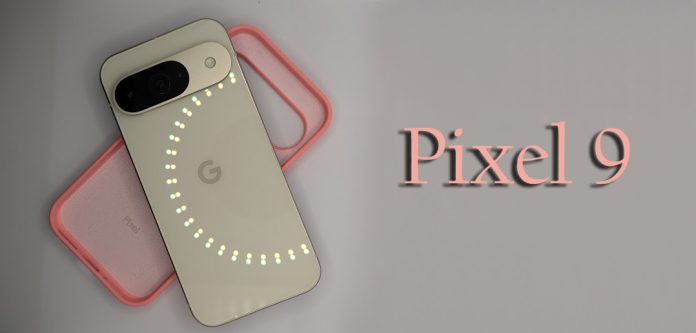The Pixel 9 is one of the suite of new Pixel phones from Google.
The phone itself is 152.8 mm (height) x 72 mm (width) x 8.5 mm (depth) and only weighs 199 g. It comes in 4 colours – Porcelain, Peony, Wintergreen, and Obsidian, and has two memory and storage options – 12GB RAM and 128 GB of storage or 128GB RAM and 256 GB of storage.
![]()
I was quite impressed with the setup process, the Pixel 9 automatically detected my location and auto switched from the default English US to English AUS, and then asked if I wanted to set up from an existing phone. I was provided with a QR code to scan, and put in my old phone’s pass code. A software update was performed and then the Pixel Pro 9 then did everything automatically – including using the information from the old phone to auto connect to Wi-Fi.
I ran through the setup for face and finger unlock and then started the process to copy the data from the old phone. Since I used a cable to connect the old phone to the new, the data copying process was pretty quick, then I just had to wait for all the apps to download.
I have to say that going from the Pixel 8 to the Pixel 9 has been one of the most painless phone swaps I’ve ever done.
Google states that the Pixel 9 has a 24+ hour battery life and up to 100 hours with the ‘Extreme Battery Saver’ mode engaged. It is also capable of fast charging – up to 55% in roughly 30 minutes if you are using a 45W USB-C cable.
I found the battery life to be excellent – I started my day at 7am with the phone 100% charged, and after a ‘normal’ use day, at 11pm it was at 47%.
For full technical specifications click here to visit Google’s official Pixel 9 page.
This phone in many respects is just a phone – it makes calls and texts, gives you access to the internet etc. What makes it new and interesting and one of the biggest changes from the 8 series, is the Pixel 9 phones now use integrated AI technology in several places – the camera’s capabilities, Google Assistant, Pixel studio, message/email summaries and searchable screenshots.
There are several new apps which take advantage of the new tech on the Pixel 9:
- Pixel Weather
- Pixel Watch (for those who have one)
- Wallet
- Pixel Tips
- Screenshots
- Safety
- Pixel Studio
- Gemini
- Lens
Most of these are pretty self-explanatory, but a few have more to explore.
The screenshots app is something I didn’t know I needed, allowing me to search by keyword for the picture I’m hunting for, rather than having to skim through the entire folder attempting to narrow my search field by desperately trying to remember the approximate date I had taken the screenshot.
Initially it does takes a little while for the app to process and ‘add’ all your screenshots, but the AI does an amazing job of categorising each picture with multiple lines of description, and you can also add your own notes. If there is text in the screenshots the app includes that in the description – and you are able to copy and paste from the description!
The AI tags aren’t always 100%, but they are pretty good, and Google does include a disclaimer to note that it is AI generated and that it may be inaccurate.

Safety is an app with several useful features. You can schedule an automatic safety check with a check-in timer. You have to respond to turn off the alert, and if you do not, the app will automatically start the Emergency Sharing feature.
Emergency Sharing will show your real time location and other critical information with your previously selected emergency contacts.
There is also the option to turn on the Emergency SOS – five or more rapid presses of the power button will allow you to call emergency services, share your information with your emergency contacts and also has the option to record a video.
Crisis Alerts notify you of natural disasters and public emergencies in your area via your device’s location, even if the safety app is closed or not in use.
The Car Crash detection feature has been in the Pixel for a few generations now – it uses a combination of the phone’s location, motion sensors and ambient audio to detect a car accident, and then sound an alert. If there is no response or you confirm you do need help the phone will then automatically call emergency services.
There is a caveat on the app indicating that it may not be able to detect all crashes and that high-impact activities may activate the feature. Phil Tann found this to be absolutely true when testing out the Pixel Watch 3. In the middle of a boxing session at the gym an alarm went off, and because it’s quite hard to access a watch when it’s under a layer of hand wraps and you’re wearing boxing gloves, he ended up having to explain to the 000 operator that he was fine and not in need of an ambulance 🙂
Pixel studio is a really fun app. You can choose from several preset options – Posters, Magical Castles, Cities etc but the AI also takes prompts from you to create images based on your text. There are several style options – freestyle, anime, sticker etc within this option, and a way to give feedback as to whether you think the image produced is a good or bad generation. If the image generated isn’t quite what you were hoping for there is also a redo button for it to try again with the same prompt. There are currently a few limitations on what it can produce – the main one being that it isn’t capable of producing human images.
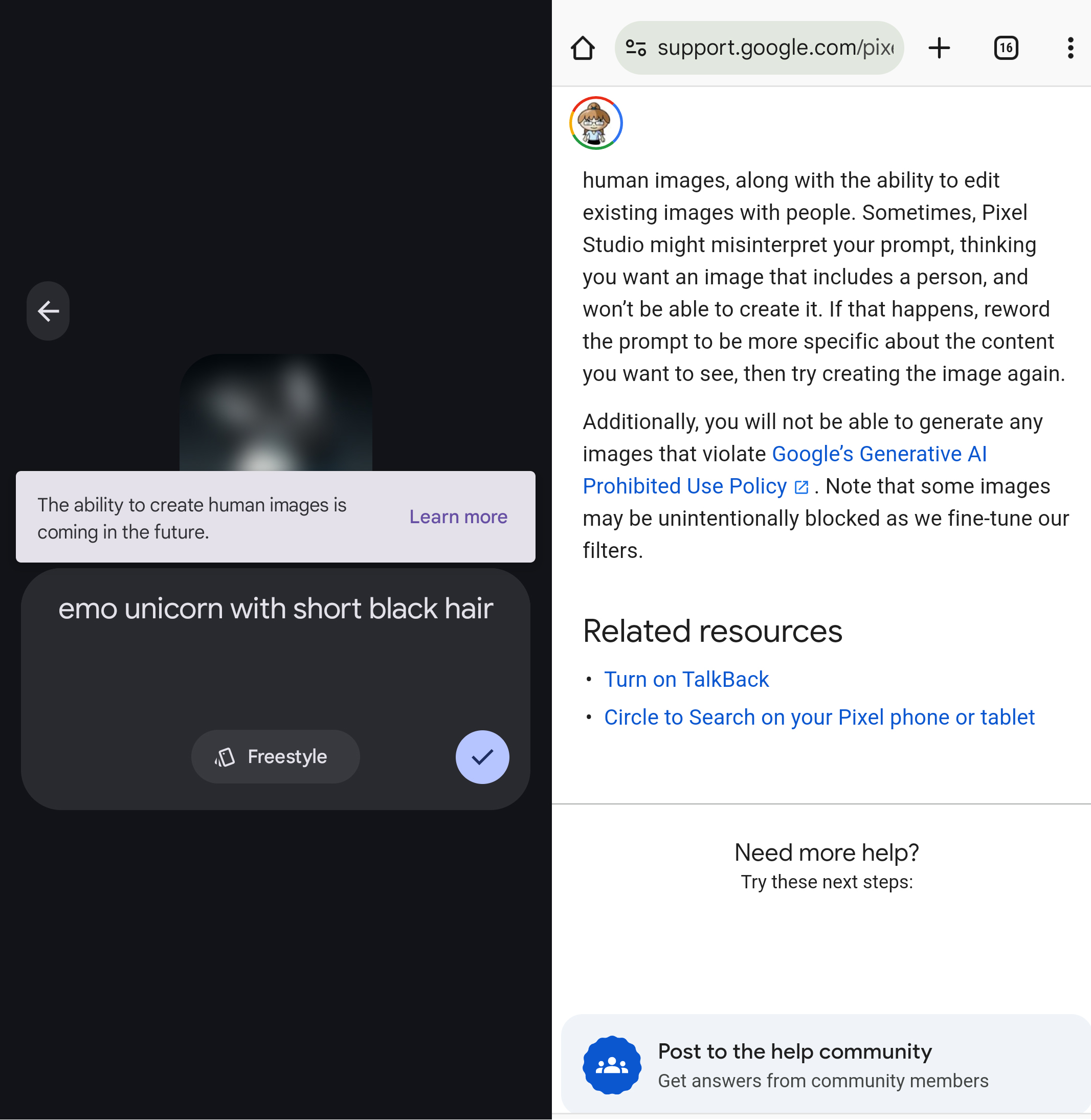
I saw this message more than once – “The ability to create human images is coming in the future” – though a few slip in here and there if you word your prompt correctly. ‘Mustachioed garden gnome’ generated only the error, but ‘Mustachioed garden decor’ gave me these:
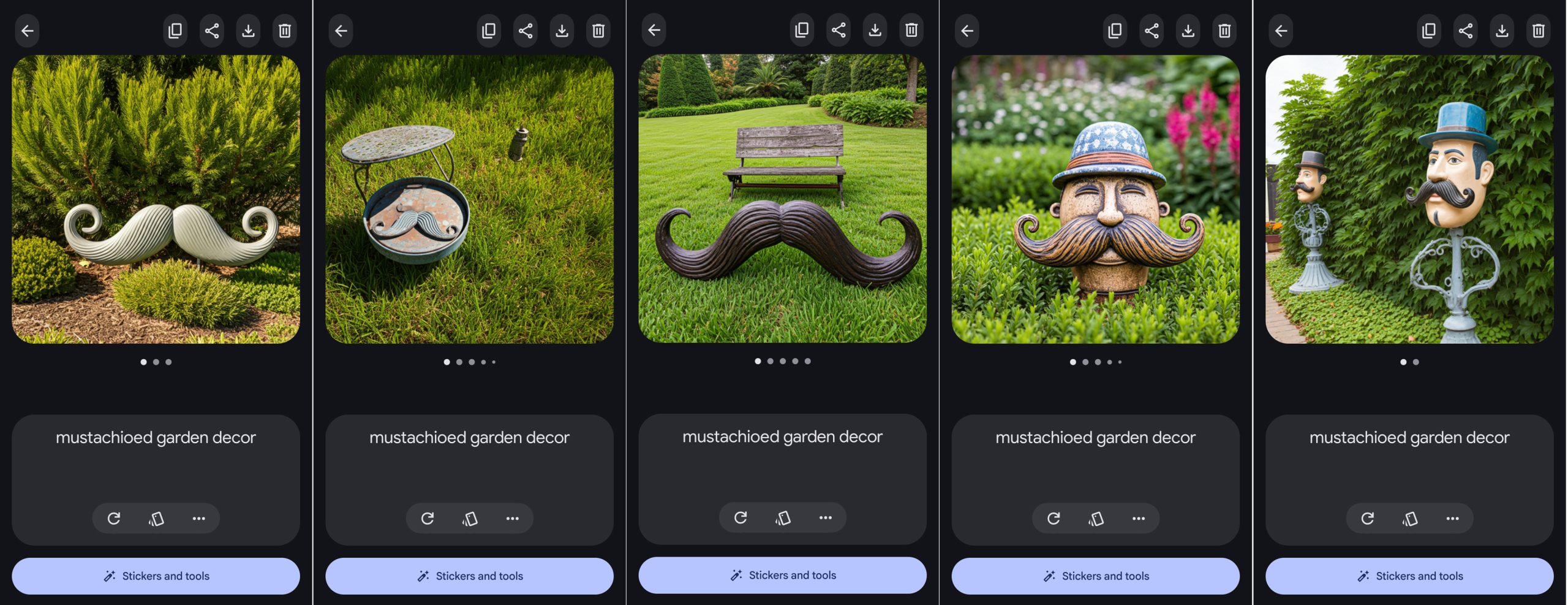
It would certainly be a help to anyone designing a logo, here’s what it produced for variations on ‘Ausdroid’ ‘ausdroid media’ and ‘ozdroid’
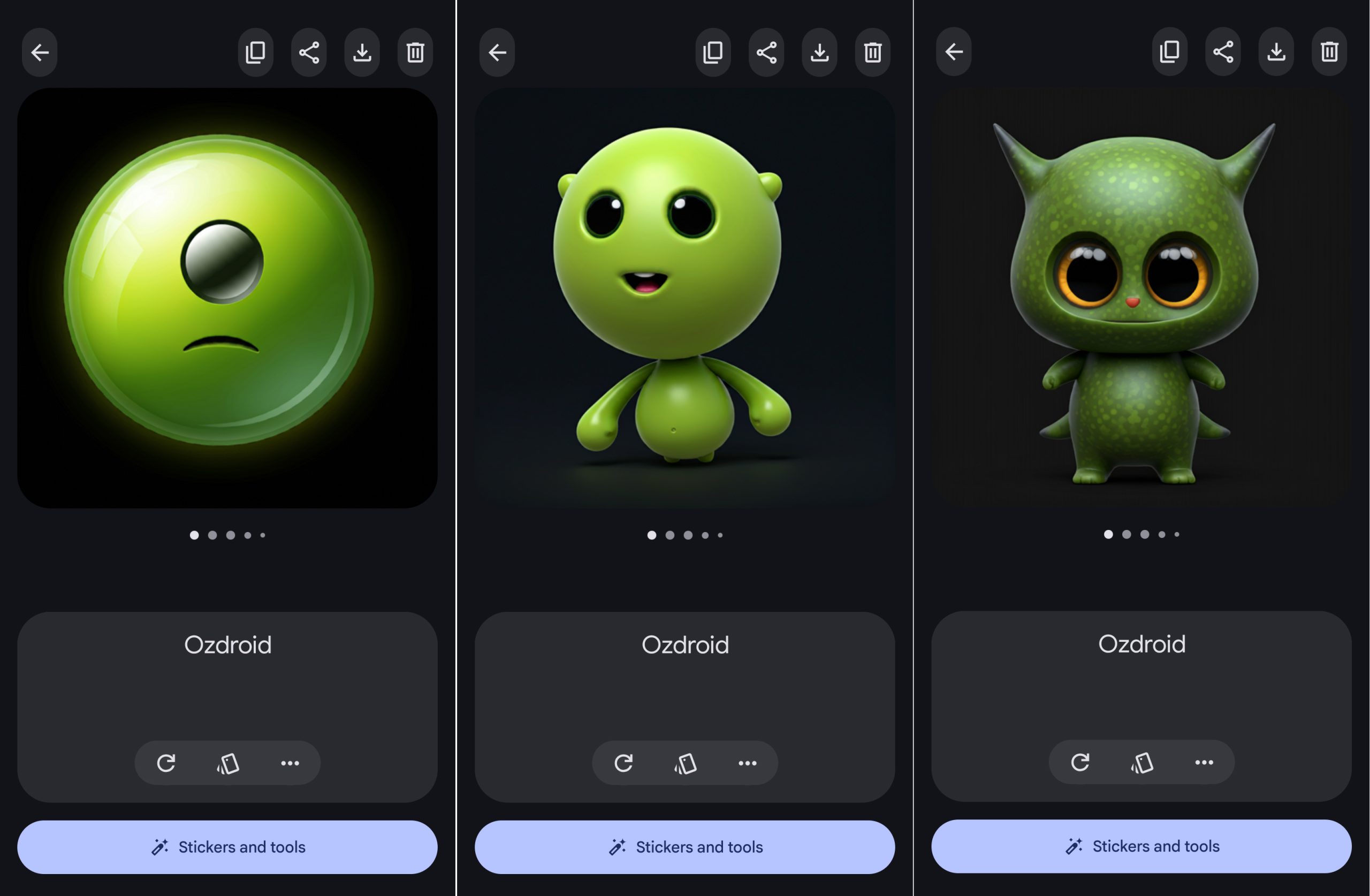
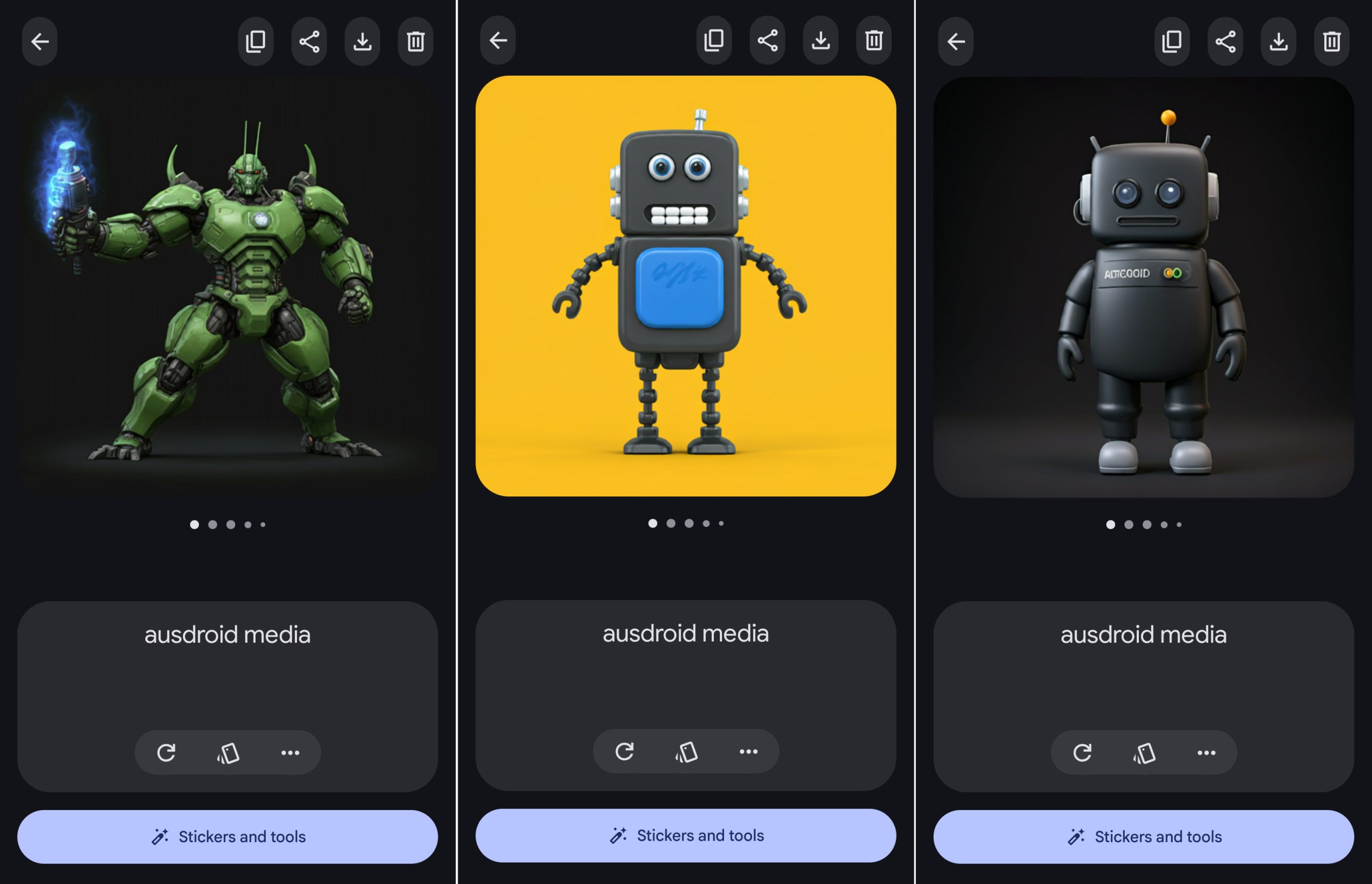
Lens has been around for a while (2017ish) but has been improved and refined using the advances in AI. Open the app and you have 3 options: Translate, Search and Homework.
I find the search option handy for plant identification – just snap a picture of the greenery in question and Lens will try and find similar flower and leaf shapes from the ever helpful internet to help you decide if you have a weed or something worth keeping. As with most of the other AI capabilities it works most of the time, a human brain is still useful to parse the results.
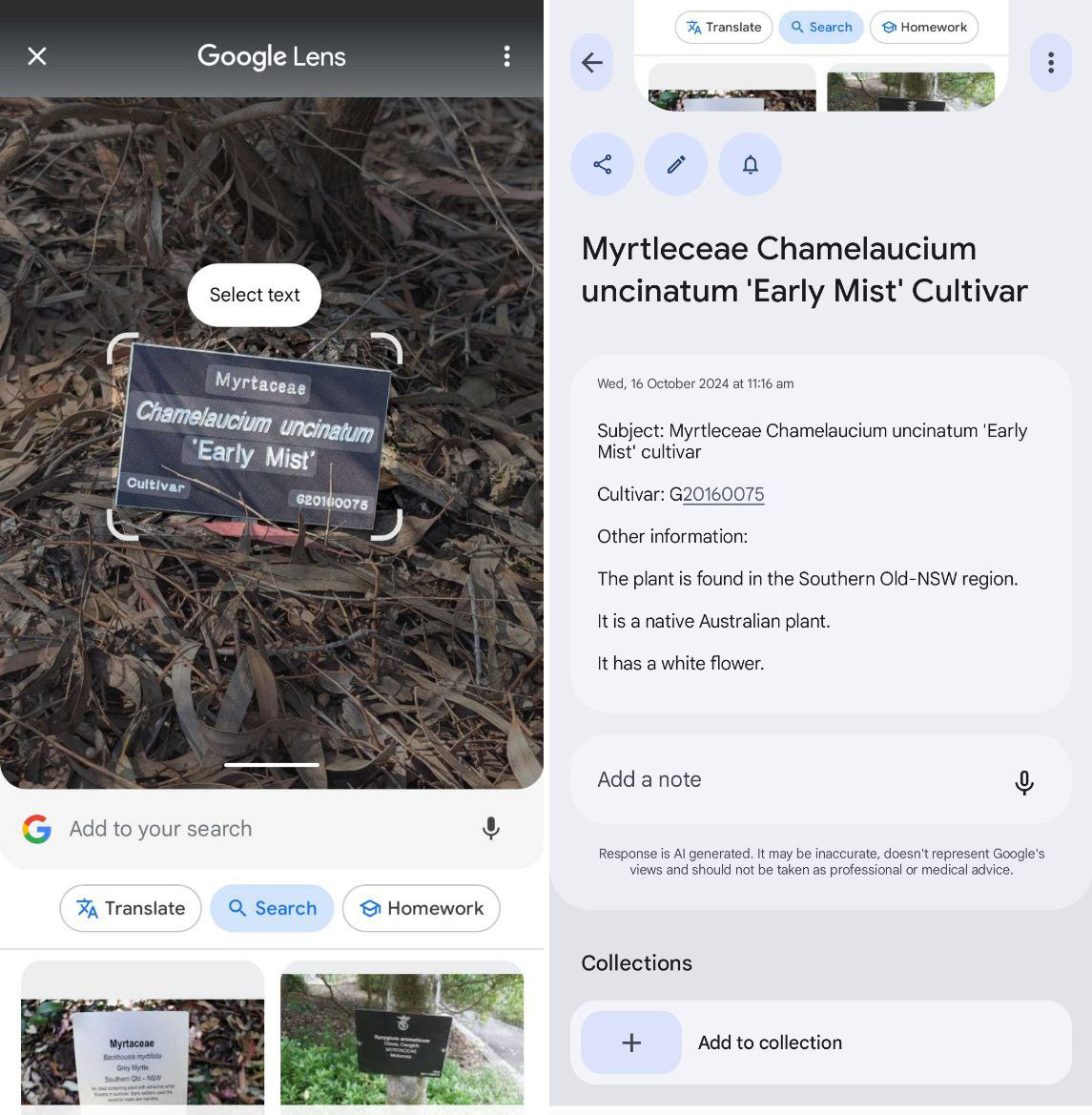
Translate is a super fun and useful tool – point your camera at text or characters in another language and see the English translation overlaid on the screen – or translate an English text into the language of your choosing in similar fashion.
Homework is both useful and slightly troubling – point the camera at a question and it performs a Google search for the answer. Since I no longer have homework (thank goodness) I tried this out on a newspaper quiz and it provided the correct answer for all the questions.
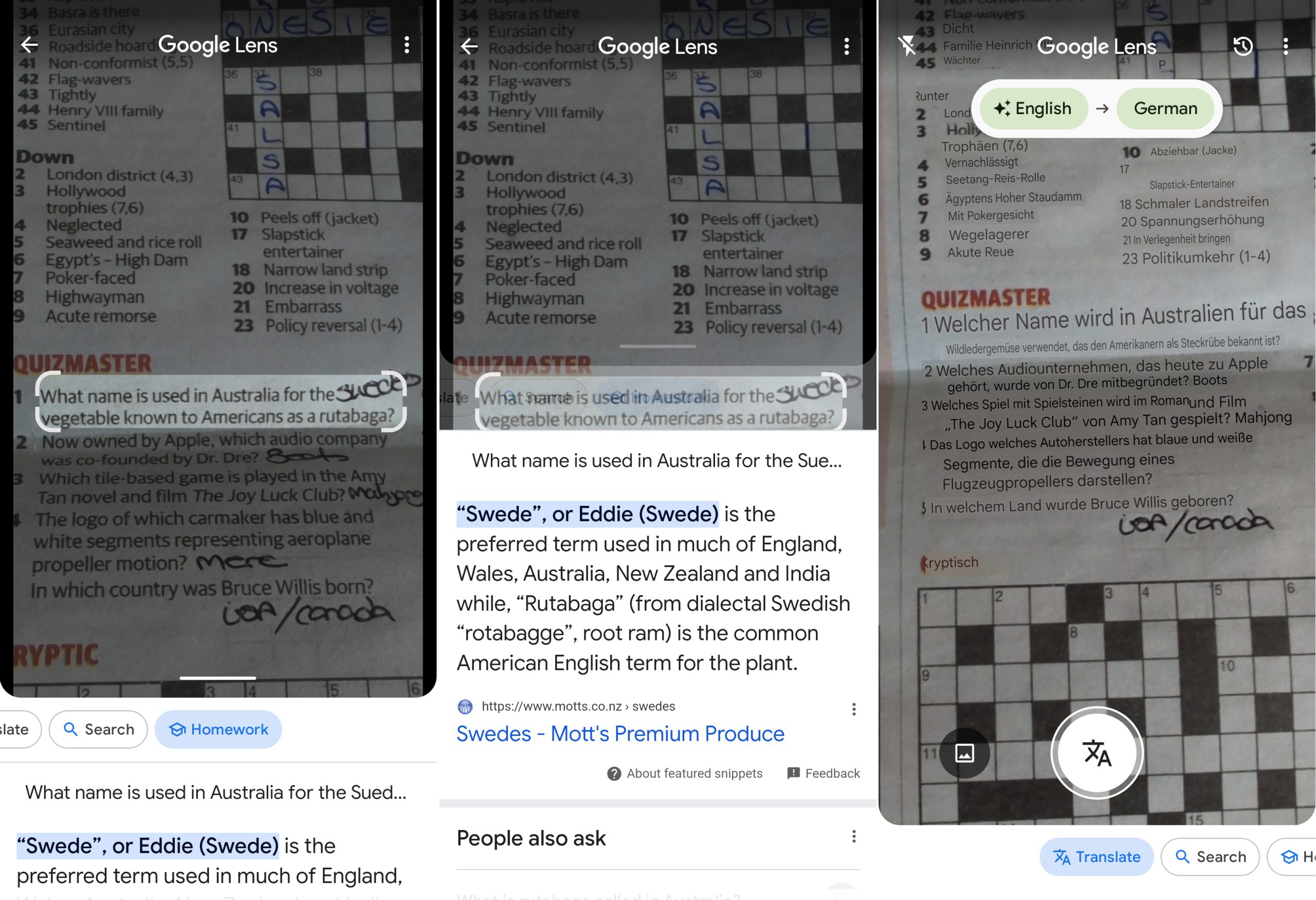
These were all fairly straightforward questions though, so I tried it out on my kiddo’s maths homework. For the more simple of the worded questions it was able to give an answer – presumably because this question was out on the internet somewhere already – but on the more complicated question it didn’t provide an answer, just resources and worksheets about the subject of the question. Lens doesn’t seem to be using AI to generate the answers, just to read the question and do a search on the text, so parents can’t rely on AI to help them with their children’s ‘new maths’ homework unfortunately, but then again, neither can the kids.

Gemini is the Google Assistant re-imagined. It features a more conversational style of interaction, rather than the previous ‘Question: Answer’ format used by the old Assistant. Gemini responds to your questions but also encourages a response from you. Simply type or tap the microphone button and ask your questions and Gemini will provide a written transcript of what was said once you are done. Since Gemini is more AI based than the old assistant, the premise is that it will learn over time as people use it, and that it will also start to ‘learn’ you.
Only tricky thing is I’m used to the ding of the Google assistant to know when it has finished talking – Gemini doesn’t appear to have this feature as it’s supposed to flow more like a conversation, however I found it tricky to know when the response was completed with no visual or auditory cue.
Conversing with Gemini can be a great deal of fun, if you are searching for inspiration or need to pour out your troubles, chatting with the AI can certainly help.
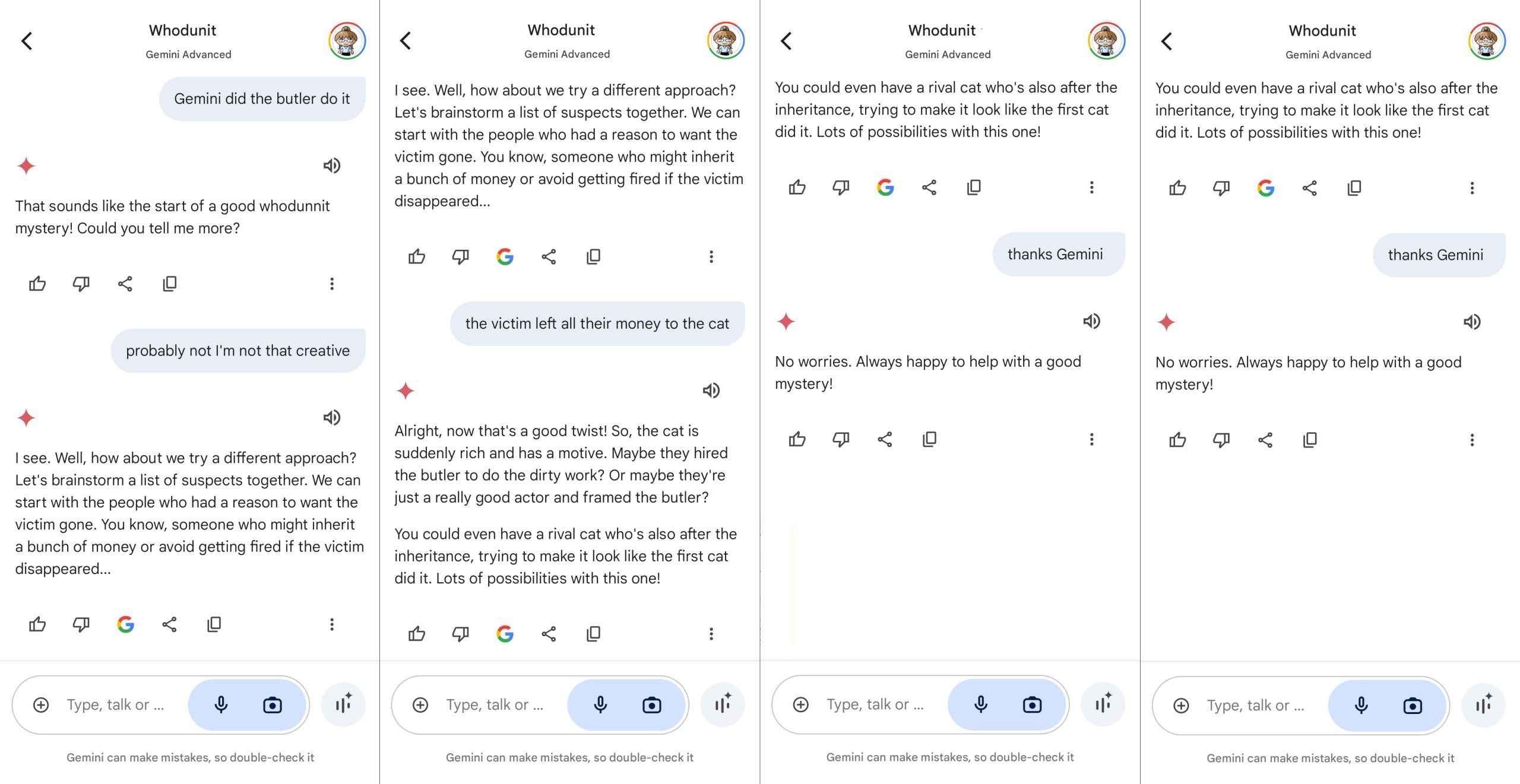
Interestingly, the above interaction didn’t include a question mark, and as you can see it sparked quite a conversation. When I repeated the question and included the question mark I received a straightforward answer with no more prompting.
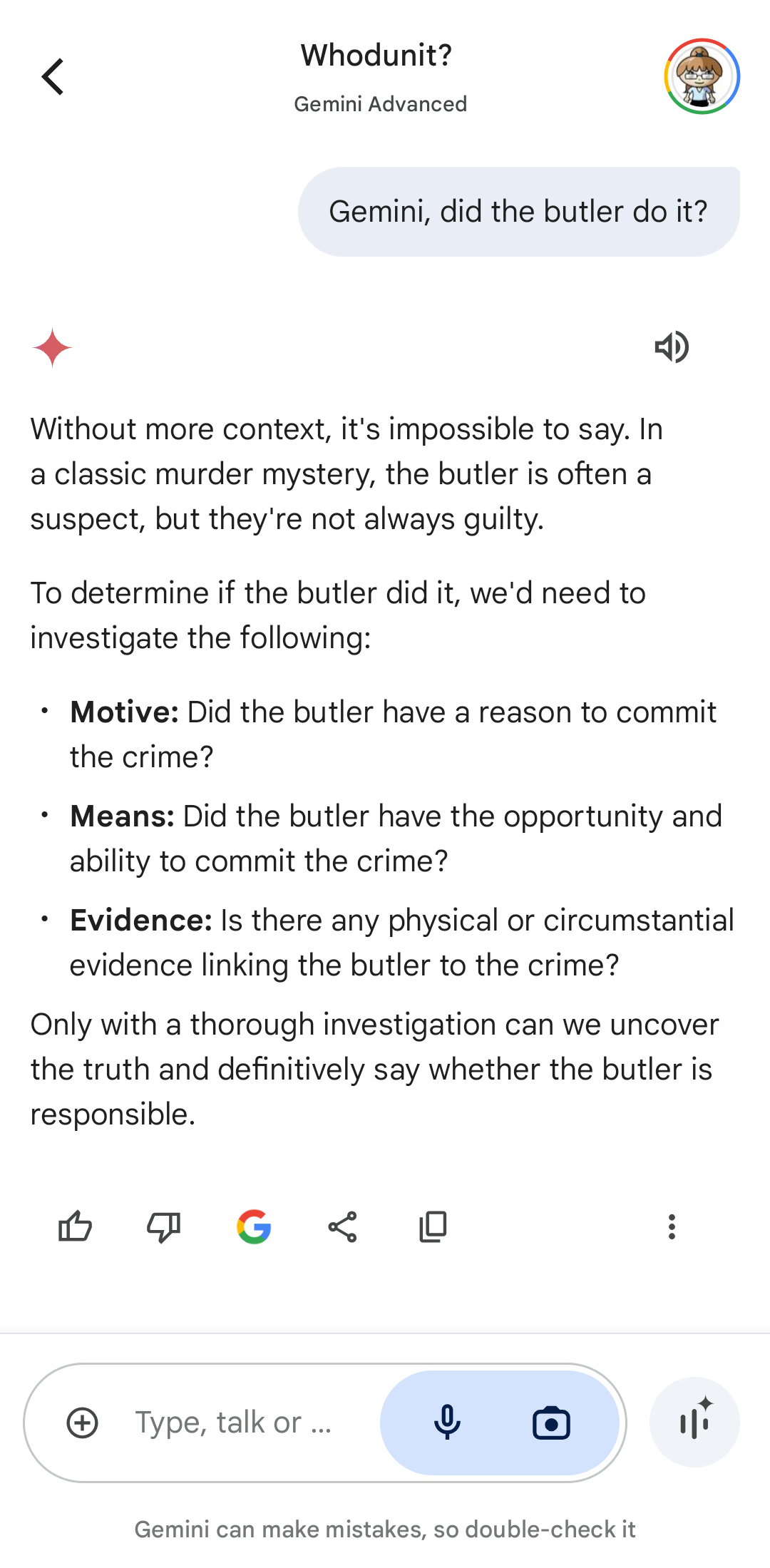
I think the new use of AI will cause people to go one of two ways – either it hits ‘uncanny valley’ territory for you and you are consequently less likely to trust the answers provided, or you trust it implicitly because it feels like talking to a real person and thus the provided answers are the gospel truth.
For me personally I’ll probably remain sceptical. I have used various AI apps and have found that they’re mostly ok for a bit of fun, but if you are researching a topic there is a real risk of being provided with information which isn’t 100% correct. This leaves you using the service to find answers but then having to turn around and (probably using Google) fact check it.
The Assistant on speakers and the old pre Pixel 9 Assistant just looked for the keywords in your search enquiry and matched them to web pages – Gemini provides answers but doesn’t show you a source – you just have to trust it. If you specifically ask for a source, Gemini will list off sources which support the information provided, but does not provide any links to them.
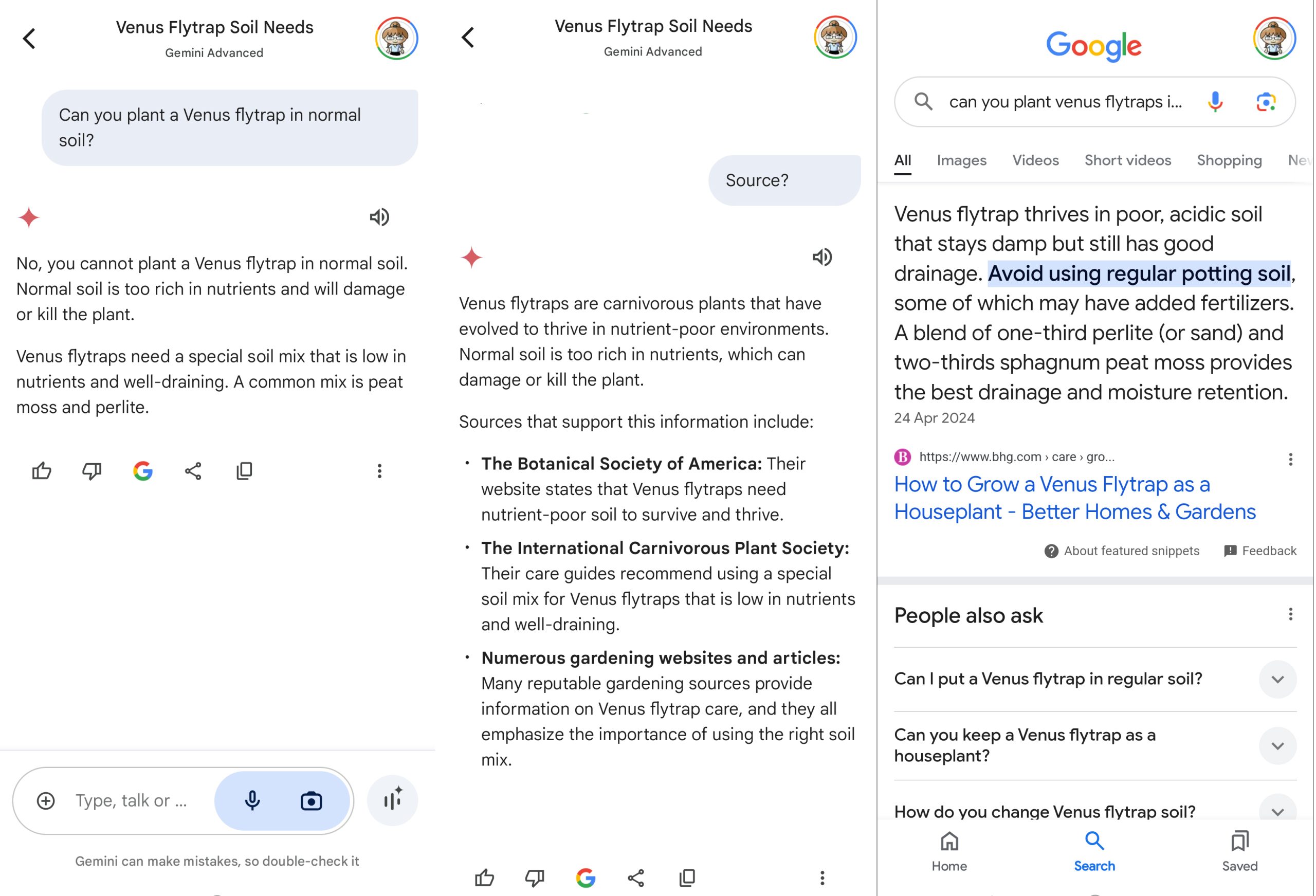
For more information on Gemini you can visit the Google website: https://gemini.google.com/faq?hl=en-AU
The other part of the Pixel 9 which makes use of AI is the camera. As well as now having the capability to zoom in using the front facing camera, the Pixel 9 has the ‘Add Me’ function.

We’ve all been there – trying to take a group photo – either you have to find (and trust) a random stranger, jury rig some sort of – likely unstable – stand for your phone, or someone is absurdly large in the front of the photo trying to use selfie mode and still get everyone in the frame.
‘Add Me’ is handy way around this problem – take your group shot and leave a spot empty for the photographer, then simply hand someone else the phone and go and stand in the empty spot. The camera will add a border around the picture which turns white when it’s lined up – and red if it isn’t, along with a warning ‘ding’ – then snap your second picture. The AI will amalgamate the two into one seamless photo. The ‘Add Me’ function isn’t available when using the front facing camera and it works best in well lit areas which have a detailed background, although it is subject to the odd hiccough now and then – I swear I’m not 10 feet tall!
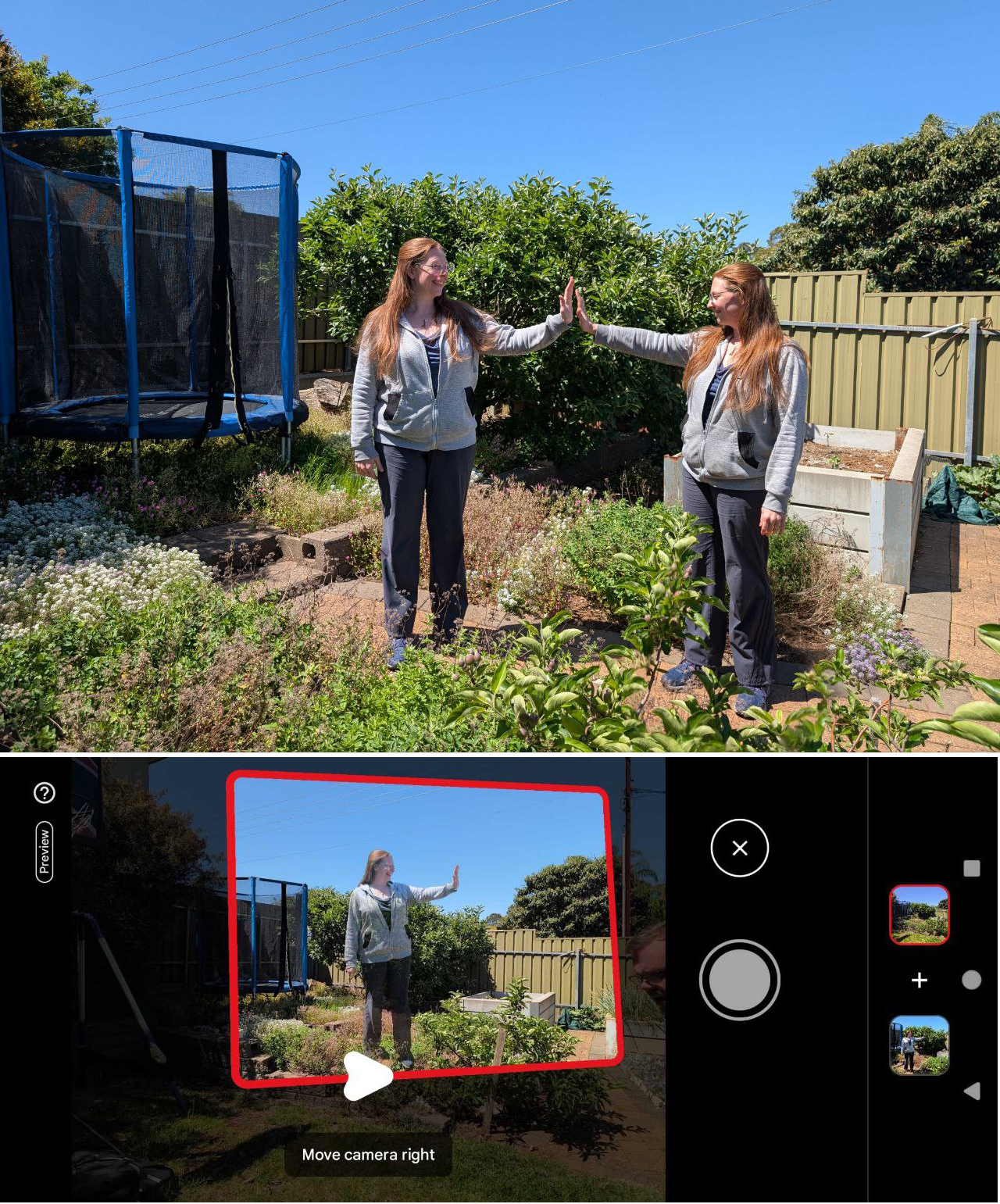
Google Lens is also available inside the camera app – you can simply tap on the lens button while viewing the photo and the AI will allow you to select and search the text or object.
You can of course do this in real time just using the Lens app, however this gives you the option to do this after the fact on any picture you have taken using the Pixel 9.
The camera app has all of the usual features too – action pan, long exposure, time lapse, slow motion etc. and the quality of the pictures produced is excellent.
There are 2 rear facing cameras – a 50MP wide lens and a 48MP ultrawide lens with Macro Focus. The front facing camera is a 10.5MP lens with auto focus and a 95° ultrawide field of view.
For the full specs visit the Google website –https://store.google.com/au/product/pixel_9_specs?hl=en-GB
Overall the Pixel 9 is a functional well made easy to use device. It provides a seamless user experience, and has quite a number of interesting new AI features to explore.
You can pick one up from all the usual retailers at the recommended retail of $1349 AUD for the 128GB and $1499 for the 256GB, but it’s always a good idea to shop around, many retailers and carriers often have specials running.
Disclosure Statement
Google has not requested the unit be returned following completion of the review

